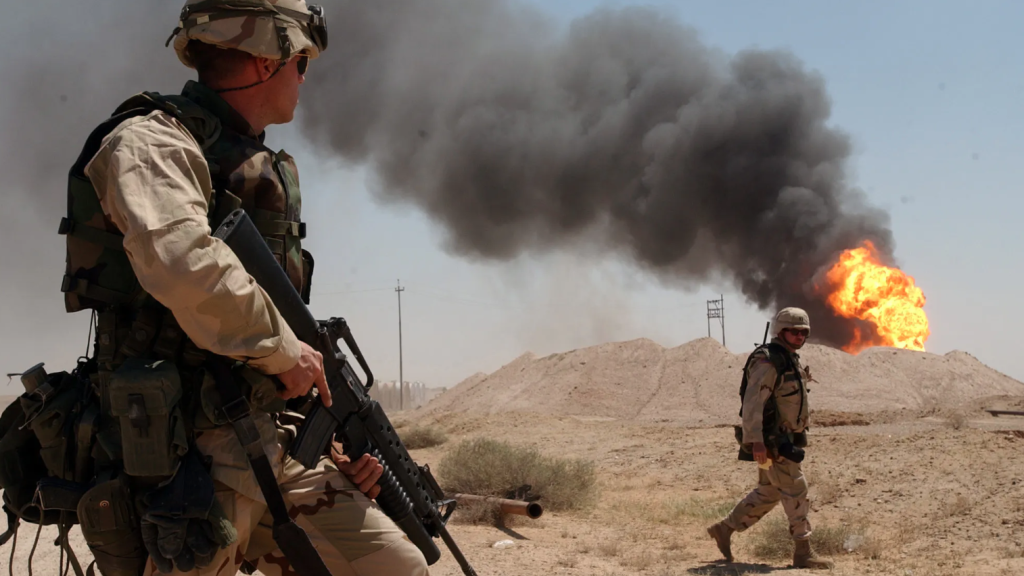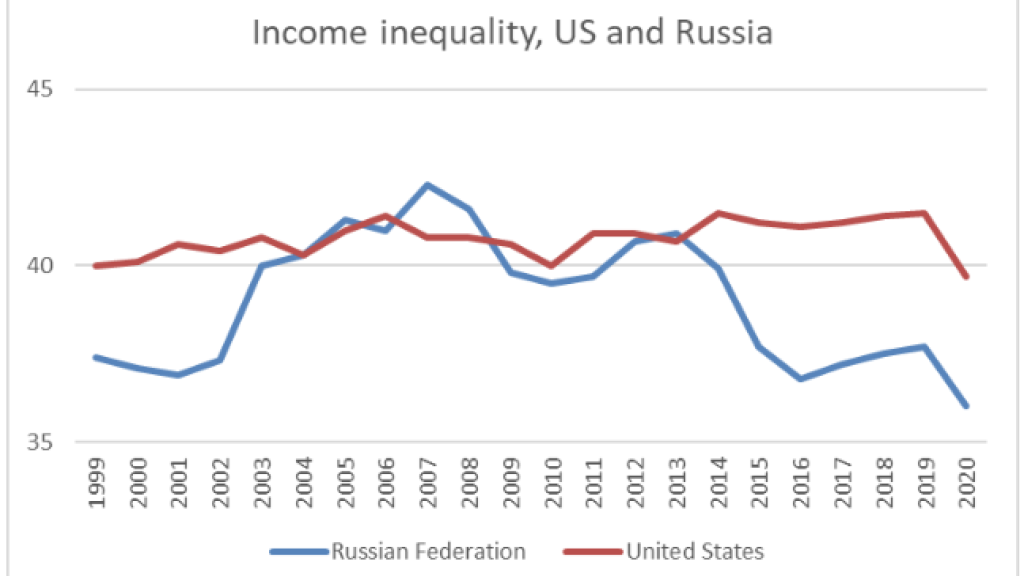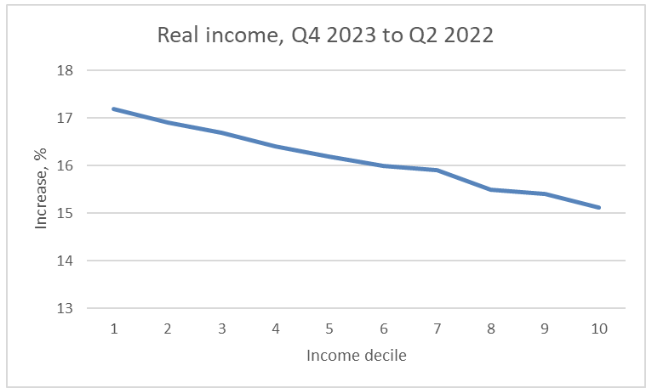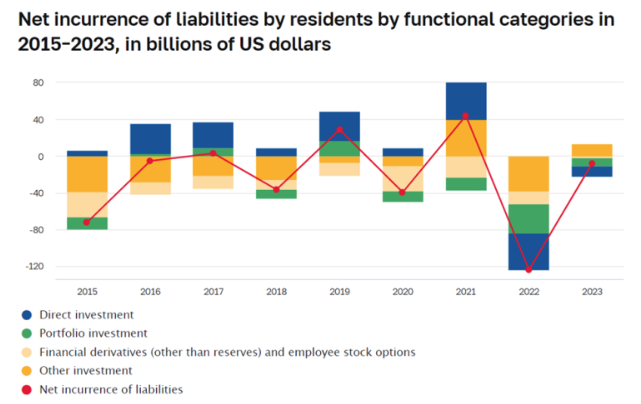Steve Leigh
12 June, 2024

First published at Firebrand.
In Marxist theory, primitive accumulation is, as Marx defined it in Capital Volume I, “the historical process of divorcing the producer from the means of production.” Occurring at different times in different regions around the world, primitive accumulation is the stage of history during which the ruling class took wealth from the lower classes — unjustly, usually by force or by theft — in order to accumulate the capital they would need to become the capitalist class.
The War Against the Commons: Dispossession and Resistance in the Making of Capitalism is an excellent new book on this history from Canadian ecosocialist Ian Angus. It is a beautifully written examination of the rise of capitalism and the destruction of peasant livelihoods as the centuries-old social relations of feudalism were abandoned for a new mode of production. Though it largely focuses on the transformation of feudalism into capitalism in England and Scotland, it has many implications for socialist organizing and for environmentalism today.
Angus’s book is especially valuable for the way it sharply refutes the reactionary thesis of “the tragedy of the commons.” It also provides substantial clarity on Marx’s views of, as he put it, “so-called primitive accumulation.”
The rise of capitalism required the war on the commons
In The War Against the Commons, Angus argues that for hundreds of years, peasants had successfully managed common land to the benefit of all. They democratically decided on its use and did not over-exploit it as the reactionary thesis contends. Often peasants repartitioned the private strips of land around the common area to give every family enough land to survive.
Of course this was not some agrarian utopia. Under feudalism, landlords ruthlessly exploited the masses of peasantry, either as serfs, who were kept in bondage, or as free farmers who were still very much tied to the land. Peasants paid rent or performed service on the lord’s demesne (the lord’s private land, attached to their manor), or both. Peasants’ rights were limited and were at the whim of the lord when it came to justice. During times of war they might be called on to fight and die for the lord’s material interests.
But in return for that exploitation, peasants were allowed the collective use of common areas. The commons were absolutely essential to the livelihoods of the peasants.
Beginning with the rise of the market economy in the 15th century, landlords were under more pressure to raise revenue. As Angus writes, “Landed families which stuck to the old ways, left rents as they were and continued to grant long leases soon found themselves trapped between static incomes and rising prices.”
There were several related strategies employed by the landlords during this period of primitive accumulation: raising rents, enclosing the commons and adding it to their demesnes, consolidating farms into larger units, and replacing farming with sheep raising. The latter required less labor and created higher profits. Overt time, the economic differentiation of the peasantry — some peasants growing more wealthy while others slipped further into poverty — aided the landlords’ efforts.
The peasant class did not just go along with these land grabs and forcible changes to the previous social arrangement. They continually resisted these attacks that denied their livelihood, and peasant revolts broke out from time to time throughout this entire process.
These revolts peaked at particular times, sometimes culminating in revolutionary situations, such as Wat Tyler’s Rebellion in 1381. More often they involved re-taking common lands by tearing down fences and hedgerows. In the 1640s, these peasant revolts intersected with the English Revolution and Civil War.
According to Angus, the peasant revolts did not fuel either side of the Civil War exclusively. Though the Parliamentarians at first seemed to take the side of the peasants against the Royalists, in the end the consolidation of power by Parliament furthered the accumulation of land in the hands of the landlords.
The most radical elements during this period were the Diggers, who tried to extend communal ownership of land both physically and through political organizing.
At the beginning of the war against the commons, the English Crown tried to restrain enclosures. They feared depopulation that would deny the needed soldiers for war; and they also feared social unrest.
Thus, the Crown passed laws to slow down the enclosure process. But landlords, who often controlled the local justices of the peace, prevented effective enforcement of these laws. Over time, Crown resistance to land consolidation and enclosure waned as the new capitalist relations dominated the economy more and more.
Angus also examines the role of the “commonwealth men” who were theoretically against capitalist development, but also opposed peasant resistance to the rising power of capitalism. They were similar to the “feudal socialists” whom Marx and Engels denounced in the Communist Manifesto — the aristocrats who railed against the exploitation of the new capitalist order and attempted to sway the proletariat to their side, while still holding deeply reactionary views. “What they upbraid the bourgeoisie with is not so much that it creates a proletariat,” they wrote, “as that it creates a revolutionary proletariat.”
Despite the peasant revolts, the dominant trend was toward enclosure and consolidation as rural residents were expelled from the land. Many became vagabonds who tried to survive by begging and stealing. Over time, the peasants who were kicked off the land became the basis of the working class that capitalism needed in industry. Thus, primitive accumulation created the proletarian class even as it destroyed feudalism.
During this era, rural people with small cottages entered the capitalist system directly by working for capitalists as weavers or in other trades under the “putting-out system.” Under this system, merchants would sell raw materials to cottagers who would work it up into products. Merchants would then buy the finished product back at a fixed rate, rather than pay a wage.
Marx called this the “formal subsumption” of labor to capital as opposed to the “real subsumption” of wage labor.
Wage labor was the last resort
When peasants were expelled from the land, wage labor was the last resort for survival. Thus, people saw wage labor as another form of slavery. As Marx wrote in Capital:
A new class of wage-laborers was born in England when great masses of men were suddenly and forcibly torn from their means of subsistence, and hurled onto the labor-market as free, unprotected and rightless proletarians.
Under feudalism, they had largely controlled their own labor. The work day was governed by the weather, seasons, and other natural conditions. Under capitalism, labor was controlled by the clock and working hours were longer.
To enforce wage labor, the state now dominated by capitalism used draconian methods, including actual slavery. “Poaching” was outlawed for the poor who needed food, but hunting was allowed for the rich who did not need it. For a period, England enforced the death penalty for hundreds of offenses, including poaching and petty theft, and also made regular use of transportation to the colonies in Australia and elsewhere.
The destruction of the old rural economy unleashed more people than the rising capitalist economy could absorb. Even if there was not enough wage work available, vagabonds were punished for not working for a master. The creation of capitalism was based on the horrific oppression of ordinary people.
This process of consolidating capitalism in England took hundreds of years, from the 15th to the 18th centuries. The practice of enclosure persisted well into the 19th century in England. In Scotland, it happened much faster after the English conquest; the results were equally bloody but much more condensed in time.
Apologists for capitalism contend that it made agriculture much more efficient. Angus thoroughly refutes this, showing that many of these improvements arose during the period of peasant management of the commons.
Angus also shows that caloric intake declined as capitalism rose. “Most industrial workers and agricultural laborers were malnourished,” he writes.
“They were less healthy and died younger than their ancestors a century earlier.” According to Angus, “The expansion of the capitalist world system caused a dramatic and prolonged process of impoverishment on a scale unprecedented in recorded history.”
The destructive birth of capitalism
Importantly, Angus explains Marx’s critical views of the war against the commons. Too many would-be Marxists stress the progressive nature of the rise of capitalism. Marx, on the other hand, saw it as a destructive process, even though it ultimately developed the productive forces that would allow the working class to take power and establish communism. As Marx famously put it, “Capital comes dripping from head to foot, from every pore, with blood and dirt.”
Marx preferred to discuss the war against the commons as “original expropriation” rather than primitive accumulation. Marx ultimately felt that “primitive accumulation” was too neutral a term — which is why he often qualified the phrase as so-called primitive accumulation.
Too many people miss Marx’s sarcasm when discussing this issue. Marx made it clear that capitalists stole their wealth from others rather than amassing it through hard work or intelligence, as the capitalist myth would have it. When workers no longer have access to the means of production, they end up having to work for those who stole it from them.
A large part of this original theft came from colonization. Angus explains the process of wealth seizure in the colonies as a further basis for the accumulation of capital in England. The effects on the native population of the Western Hemisphere and on enslaved Africans are well-known. As Marx wrote in Capital: “The veiled slavery of the wage-laborers in Europe needed the unqualified slavery of the New World as its pedestal.”
He goes on:
The discovery of gold and silver in America, the extirpation, enslavement and entombment in mines of the indigenous population of that continent , the beginnings of the conquest and looting of India, and the conversion of Africa into a preserve for the commercial hunting of blackskins, are all things which characterize the rosy dawn of the era of capitalist production.
Thus the issues raised by this history are directly relevant to anticolonial and antiracist struggles today.
Debates on the left and the ongoing relevance of the history of accumulation
According to Angus, the war against the commons continues to this day. He believes Marx saw expropriation as a continual basis of capitalism, not just a contained process occurring at its dawn. Though capitalism now dominates the world economy, the dispossession of the world’s peasantry continues. Capital still accumulates through expropriation.
This bears on current political controversies on the left. David Harvey, for example, focuses in his writings on current “accumulation by dispossession.” Harvey seems to downplay the importance of the basic process of mature capitalism: accumulation by exploitation — in other words, not paying workers the full value of what they produce. Angus does not explicitly endorse Harvey’s position but does argue the importance of the continuation of expropriation of peasant land.
This is an important emphasis which solidifies our understanding: “Since the late 1900s, capital’s continuing war against the commons has dispossessed millions of peasant families in Africa, Latin America and Asia.”
Modern-day peasant resistance to being forced off their land is certainly a struggle that the left should support. Peasants can be allies with workers in the war against capitalism — Marx agreed with this approach. Angus notes the positive attitude Marx had toward the peasant communes in Russia. He thought they could become the basis of a transformation to communism — but importantly only if connected to the international working-class revolution. Marx rejected a utopian view of the peasant commune.
Nor does Marx’s attitude mean that Marxists support the preservation of peasant property even after the working-class revolution. The goal is still collective control of the whole economy, including land, by the population as a whole.
In spite of the need for Marxists to defend the remaining commons, the current context is important. In the period that Angus focuses on in early modern England, capitalism was still forming. Most of the world was pre-capitalist. The seizure of the commons was absolutely essential to the rise of capitalism.
Today, the situation has been transformed. The world economy is now universally capitalist. Even the remaining peasant agriculture is largely commercial and integrated into the capitalist market. Subsistence agriculture, which was the essence of agriculture during the rise of capitalism, is now more marginal.
Over the last 141 years since Marx’s death, much of the common land has been taken by capitalists. The expropriation of peasant land today is a transfer of wealth among participants in the capitalist system. It is no longer the destruction of a pre-capitalist mode of production to make way for capitalism. Today, expropriation is an important supplement to exploitation, but only a supplement.
Contra Harvey, the main emphasis of anticapitalists today needs to be resistance against the exploitation of workers, and opposition to the oppression that divides workers. The form of a worker-peasant alliance will differ from country to country, but defense of peasants should be integrated into the working-class revolution rather than being seen as a separate struggle.
Angus argues that Marx and Engels were more flexible and less dogmatic than later Marxists are. He discusses how Engels was reluctant to give advice to Russian activists because of ignorance of Russian politics. Angus also says that Marx and Engels supported assassination as a political strategy in Russia even while opposing it in Britain.
This attitude is an important corrective to dogmatism. Marxists need to understand the political and economic situation before pronouncing on it. We must learn before we can teach! However, the world has transformed in the last 140 years. The spread of the capitalist system across the world means that Marx’s strategies for the capitalist countries in the 1880s are more applicable across the world today than they were in his time. Although we need to understand the specifics of each situation, the broad contours of the focus on working-class struggle are applicable everywhere. The Communist Manifesto’s famous conclusion, “Workers of the world unite; you have nothing to lose but your chains,” is even truer today than when Marx and Engels wrote it.
This shift is shown by the changing strategy of Russian Marxists, including the Bolsheviks, before the Revolution. As capitalism developed in Russia in the early 20th century, they moved away from Marx’s positive attitude to the Narodniks, who were oriented to the peasantry. Instead, they focused on organizing the industrial working class.
Finally, Angus raises the very important issue of overcoming the division between the town and country. Marx and Engels were very clear on the importance of spreading the population rather than having it concentrated in cities. They saw this as similar to the abolition of class division. In The Housing Question (1878), Engels wrote, “The abolition of the antithesis between town and country is no more and no less utopian than the abolition of the antithesis between capitalists and wage workers.”
The War Against the Commons is a brilliant examination of the rise of capitalism. It smashes some of the bases of capitalist ideology, and vindicates the possibility of democratic control of the earth. It makes a valuable contribution to current debates on the left, connecting anticapitalism to defense of the environment. It shows that capitalism has always been opposed to ecological sanity — for example demonstrating the direct connection between capitalism and fossil fuels, especially coal.
For all these reasons, it is a must-read for socialists and for all who care about the future of humanity and the planet.
Steve Leigh (he/him) is a founding member of Firebrand and the Seattle Revolutionary Socialists. He has been an active Marxist since 1971 and was a founding member of the International Socialist Organization. He was a shop steward in SEIU for 35 years and is a member of the retirees chapter of SEIU 925. Read more from Steve on his blog.










